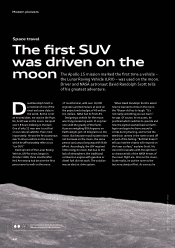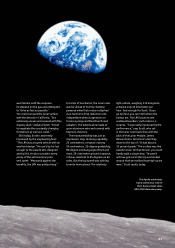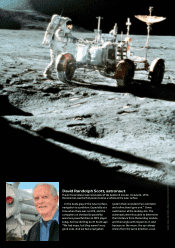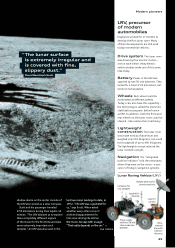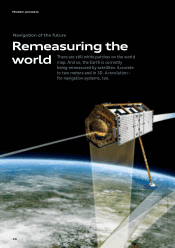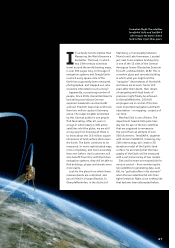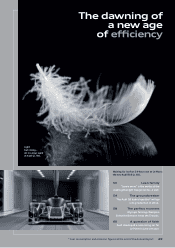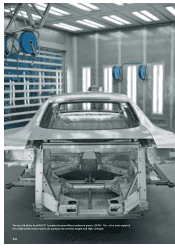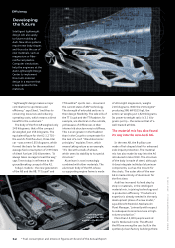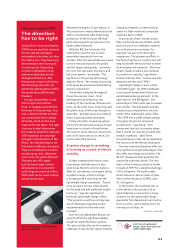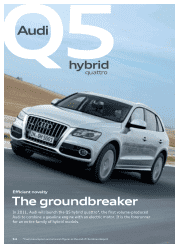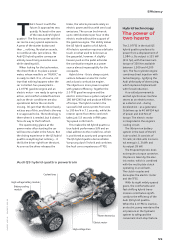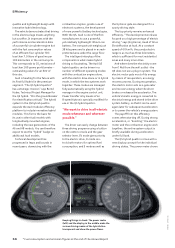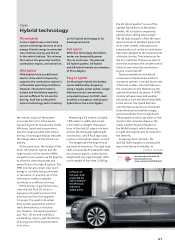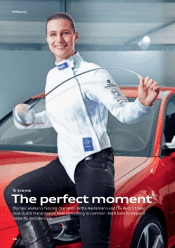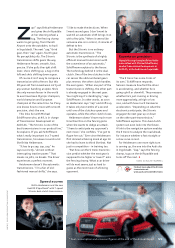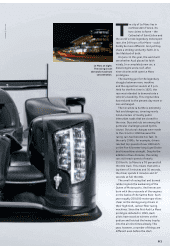Audi 2010 Annual Report Download - page 54
Download and view the complete annual report
Please find page 54 of the 2010 Audi annual report below. You can navigate through the pages in the report by either clicking on the pages listed below, or by using the keyword search tool below to find specific information within the annual report.
52
Developing
the future
Intelligent lightweight
design will also apply
to future mobility at
Audi. New drive systems
require new body shapes
and thus also the use of
new materials, such as
magnesium or fi ber-
reinforced plastics.
Computer simulations
help the engineers at the
Audi Lightweight Design
Center to implement
this multi-material
design in a manner that
is appropriate for the
materials.
“Lightweight design makes a major
contribution to sportiness and
effi ciency,” says Elend, “and thus to
conserving resources and reducing
operating costs, which means a direct
benefi t to the customers.”
The body of the fi rst A8 weighed only
249 kilograms; that of the compact
A2 weighed just 156 kilograms. The
equivalent fi gure for the A2 1.2 TDI –
the world’s fi rst fi ve-door, three-liter
car – was a mere 135 kilograms, which
formed the basis for the sensational
average fuel consumption of 2.99 liters
of diesel fuel per 100 kilometers. “It
always takes courage to lead the way,”
says Timm today in reference to the
groundbreaking concept of the A2.
Today’s models – the new generation
of the A8 and the R8, TT Coupé* and
TT Roadster* sports cars – document
the current state of ASF technology.
The strength of extruded sections is
their design fl exibility. The side sills of
the TT Coupé and the TT Roadster, for
example, are identical on the outside,
yet because of diff erences in their
internal rib structure vary in stiff ness.
This is even greater in the Roadster
than in the Coupé to compensate for
the lack of a roof. “We utilize bionic
principles,” explains Timm, which
means taking nature as an example.
“It’s like with a stalk of wheat,
which owes its stability to its special
structure.”
Aluminum is now increasingly
combined with other materials. The
aluminum body of the R8, whose
co-supporting engine frame is made
of ultra-light magnesium, weighs
210 kilograms. With the V10 engine*
producing 386 kW (525 hp), the
entire car weighs just 1,620 kilograms.
Its power-to-weight ratio is 3.1 kilo-
grams per hp – the same as that of a
well-trained athlete.
In the new A8, the B-pillars are
made of hot-shaped steel for enhanced
side-impact protection. The material
mix has also made its way into the A6
introduced in late 2010. The structure
of the body is made of steel, although
it does integrate individual aluminum
components, such as the mount for
the struts. The outer skin of the new
A6 is made entirely of aluminum for
the fi rst time.
Audi has increased its lead step by
step: in materials, in the intelligent
material mix, in joining technology and
in production effi ciency. “Production’s
expertise is already needed in the early
development phase of a new model,”
says Albrecht Reimold, Neckarsulm
Plant Manager, “primarily with respect
to subsequent economical use in high-
volume production.”
More than 13,000 people work at
Audi’s Neckarsulm site. The A8 and
the R8 are among the cars built in the
spotlessly clean factory buildings there.
The material mix has also found
its way into the new Audi A6.
Effi ciency
Irresistible power:
the 5.2-liter V10
engine in the R8 GT*.
* Fuel consumption and emission fi gures at the end of the Annual Report
PHOTOS | LAURENT BURST/AGENTUR FOCUS (2) SKETCH | AUDI AG


